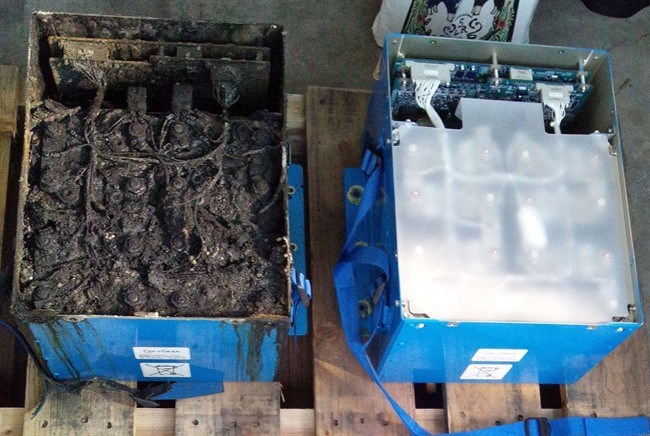TOKYO - A lithium ion battery on a Boeing 787 that overheated during an All Nippon Airways flight earlier this month experienced a sudden drop in voltage and was not overcharged as previously thought possible, Japan's transport safety agency said Wednesday.
Japan Transport Safety Board chairman Norihiro Goto told reporters the jet's data recorder showed the main battery, used to power many electrical systems on the jet, did not exceed its maximum voltage. That contradicts an earlier assertion by the agency as it investigates with the U.S. Federal Aviation Administration.
All 50 of the 787 Dreamliners that Boeing has delivered to airlines were grounded after the emergency landing by the ANA flight in western Japan on Jan. 16. Boeing has halted deliveries of new planes until it can address the electrical problems.
Goto said the maximum voltage recorded for the battery was 31 volts, which was below its 32 volt limit. But the data also showed a sudden, unexplained drop in the battery's voltage, he said.
Aircraft do not usually use the kind of lithium ion battery chosen for the 787, and investigators are still struggling to figure out what may have gone wrong.
"It's not that it is difficult, but that we are not so familiar with it," Goto said.
The Transport Safety Board said it also will study the aircraft's auxiliary battery and compare data from each.
Investigators from both sides are probing GS Yuasa, the maker of the charred battery, and are examining the battery using CAT scans at a facility of Japan's aerospace agency.
U.S. investigators also said that they found no evidence of overcharging in a battery that ignited on a Japan Airlines Boeing 787 as it sat on the tarmac in Boston's airport earlier this month.


